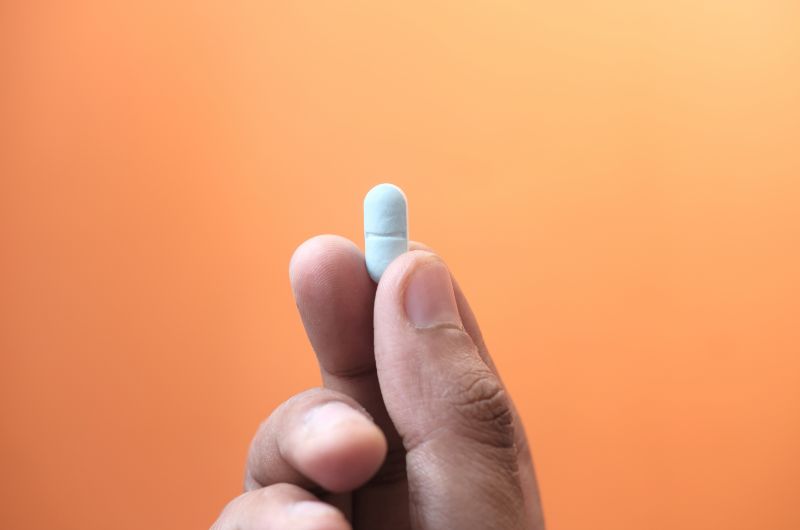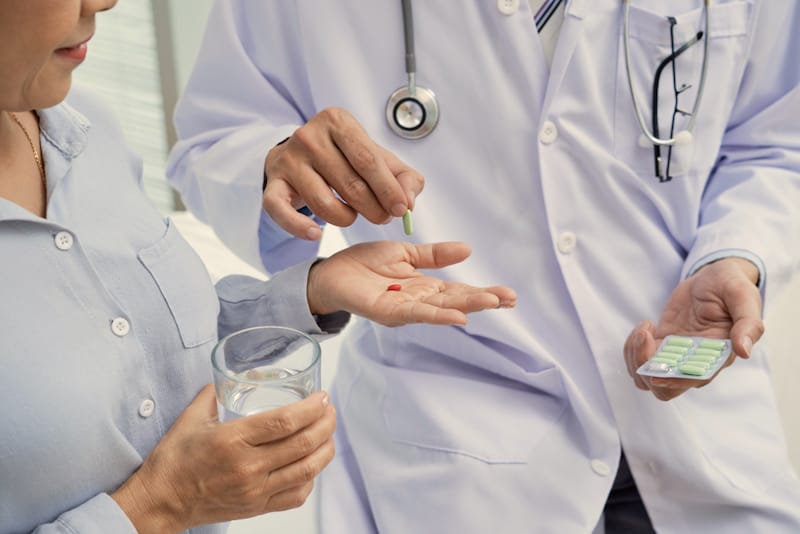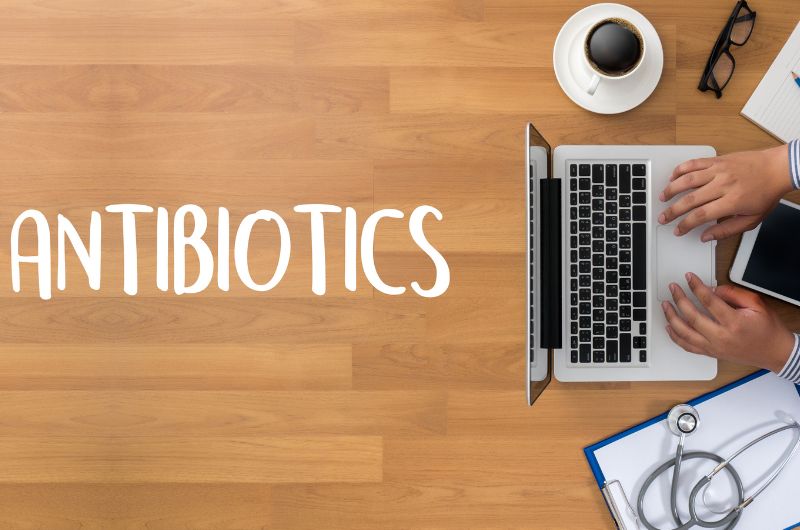Minor cuts and wounds may heal on their own and don’t necessarily need an antibiotic. Large, deep wounds are prone to infection. Your doctor may need to prescribe you antibiotics for these. If you got your wound from an animal bite or a sharp and dirty object, you need to have a tetanus shot or a booster. Your antibiotics depend on the type and severity of the infection. You may need to take oral tablets, apply cream and ointment, or do both.
Have you ever had instances when you wanted to treat your cough with an antibiotic? Most people would think of having an antibiotic whenever they feel ill.
The same goes when you have a minor cut or wound; you would want to apply an antibiotic cream or ointment for it to heal.
But, when you ask a doctor, they would recommend you skip the antibiotics and only take them when signs of infection occur.
Sometimes, you don’t need an antibiotic to treat your cuts or wounds. So, when should you take them?
What are antibiotics?
While our immune system fights diseases caused by bacteria or viruses, sometimes, it can’t clear these infections by itself and needs help from certain medications.
📌 Antibiotics are potent drugs that can kill or slow down the growth of harmful bacteria. It was in 1928 when Alexander Fleming discovered the first natural antibiotic called penicillin. His discovery benefited the development of modern antibiotics that treat different bacterial infections.
Before the discovery of penicillin, people would die from illnesses caused by bacterial infections that are now highly curable.
We’re lucky that today we have access to more than 100 antibiotics.
Antibiotics can come in tablets, capsules, liquids, creams, and ointments.
Some types require a prescription from your doctor. However, most creams and ointments for cuts and wounds are available over the counter.
How do antibiotics work against bacteria?

Different antibiotics work for a specific type of bacterial infection. That’s why it’s inappropriate and dangerous to take an antibiotic without consulting your doctor.
Antibiotics can work by:
- Killing the bacteria by attacking the bacterial cell wall
- Interfering with the formation of its cell content
- Stopping or preventing the bacteria from multiplying
Antibiotics can start to work right after you take them. But it may take you 2 to 3 days to start feeling better.
You may need to take antibiotics for 7-14 days.
It’s vital to finish your course of antibiotic treatment even if you’re already feeling better to treat the infection and prevent antibiotic resistance entirely.
Don’t stop your medication unless advised by your doctor.
Remember that antibiotics don’t treat viral infections.
Your doctor may prescribe other medications in cases of flu and coughs caused by a virus.
What is antibiotic resistance?
It would be best if you only took antibiotics when prescribed by your doctor. Misuse and overuse of these drugs can result in antibiotic resistance.
Antibiotic resistance is becoming a rising global health problem in our world today. It affects anyone of any age and any race.
An estimated 4 million deaths in more than 200 countries related to antibiotic resistance have occurred.
When bacteria that cause diseases like pneumonia, tuberculosis, blood poisoning, gonorrhea, and foodborne illnesses withstand or become “resistant” to antibiotics and survive, it leads to antibiotic resistance.
It results in more extended hospital stays, higher medical costs, and higher death rates.
Moreover, bacteria that resist medications cause infections that can be more difficult or impossible to treat.
That’s why you should only use antibiotics when prescribed by a certified healthcare professional.
Below are also guidelines that experts recommend to avoid antibiotic resistance:
- Follow instructions given by your physician when prescribed antibiotic medications.
- Don’t demand antibiotics when your physician doesn’t prescribe them.
- Take antibiotics as prescribed by your doctor.
- Don’t share antibiotics with anyone else.
- Never use leftover antibiotics.
- Keep yourself protected from infections by taking preventive measures (washing hands regularly, following proper hygiene in preparing food, distancing yourself from sick people, practicing safer sex, and keeping vaccinations up to date.
When do you need antibiotics for a cut?

You only need to take antibiotics when your cut becomes infected. It would be best if you visited your doctor when signs of infection on your wound occur.
Below are signs and symptoms that your cut or wound has developed an infection:
- Increasing pain, swelling, and redness in the wound
- Yellow or green pus oozing from the wound, which may have a foul odor
- The skin on or around the wound looks jagged and may have red streaks
- The skin surrounding the wound may feel warm, swollen, and/or numb
- You have a fever and chills
- You experience nausea and vomiting
Please see your doctor immediately if your wound isn’t getting any better and you develop similar symptoms as mentioned above.
Remember that redness and swelling are a part of the wound healing process, but when it doesn’t gradually decrease within 5-7 days, it could be a sign of an infection.
Another significant symptom is when the redness spreads and worsens over time.
How does an infected cut get treated?
Antibiotics are usually needed to treat and stop an infected wound from spreading. In addition, your doctor may prescribe an antibiotic cream for minor infected wounds.
You may need oral antibiotics if the wound or cut is large and deep (such as post-surgical wounds).
Sometimes, your doctor may also need to stitch a large wound close. If your wound contains dead tissue, your doctor may need to perform debridement to remove it and prevent the infection from spreading.
Afterward, your doctor or nurse will clean and dress your wound correctly to protect it from further complications.
Remember that you must finish the course of antibiotics your doctor prescribes to stop the infection and prevent the bacteria from resisting the antibiotic.
If your wound is from an animal bite or a dirty and rusty object, you could be at risk of tetanus.
You must receive a tetanus shot when this happens to stop the bacteria from affecting your nerves and causing severe complications.
6 care tips for an infected cut
An infected cut or wound needs proper care and antibiotic treatment to promote healing and prevent the infection from spreading.
Below are care tips for your infected wound:
- Always keep your wound clean and dry. For example, cover your wound when taking a bath to keep it from getting soaked.
- Clean your wound using mild soap and water (better if drinking quality or cool boiled water). You may also use a wound cleaner as directed by your doctor.
- Change your bandages frequently, especially when they get wet or dirty.
- Eat healthy foods like fruits, vegetables, whole-grain bread, low-fat dairy products, and lean meat or protein. These can promote your healing.
- Manage your other health conditions which can interfere with your wound healing. For example, if you have high blood pressure or diabetes.
- Quit smoking. Whether it’s cigarettes, E-cigarettes, or smokeless tobacco, they contain nicotine which slows down wound healing.
Complications of an infected cut
When you don’t treat an infected cut promptly, complications may arise. The infection can spread and cause you to feel ill severely.
The following can result from an untreated infected cut:
- Cellulitis. It occurs when the infection spreads into your skin’s deeper layers and tissues.
- Sepsis. A severe infection can enter your bloodstream and cause life-threatening organ failures.
- Osteomyelitis. It occurs when the infection reaches your bones.
- Necrotizing fasciitis. It’s commonly known as “flesh-eating disease,” which occurs when the infection becomes extremely severe. It results in severe skin damage and pain, which can spread throughout your body.
- Impetigo. It occurs when an infected cut doesn’t heal properly. It can also be contagious and can spread through close contact.
FAQs
Will an infected wound heal itself?
Some minor infected cuts or wounds heal on their own. But, if you feel increasing pain, swelling, and redness along with yellow or green pus oozing out from the wound, you need medical attention immediately.
The large and deep wound needs medical help immediately, as well as injuries from an animal bite or sharp and dirty objects.
Takeaway
You don’t need to take antibiotics when your cuts or wounds show no signs of infection.
Instead, you can clean your wound daily, keep it moisturized using petroleum jelly in a tube (to prevent germs from spreading), and cover it with an adhesive bandage or use hydrogel or silicone gel sheets.
Your doctor may prescribe antibiotics when you experience increased pain, redness, and swelling on your wound or other signs of infection.
Read more about antibiotics by checking these posts below:
- Can You Put Triple Antibiotic Ointment On Your Private Area? (When To See The Doctor)
- Do Antibiotics Make You Emotionally Unstable? (4 Possible Causes For Emotional Instability)


